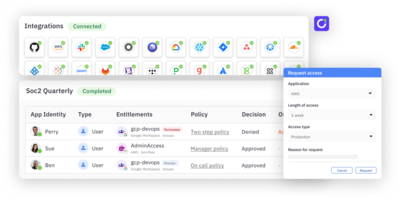Modern enterprises can’t afford bottlenecks in access management. Every access request, entitlement, and review needs the right person making the right decision, fast. That’s where policies in ConductorOne shine. They don’t just tell the platform who should approve a task; they bring automation, intelligence, and scalability to identity governance.
What policies do
At their core, policies in ConductorOne are a set of instructions that determine how reviews and approvals are assigned and executed. They define who should review a task, what conditions apply, and what should happen once the review is complete.
For example, a policy might determine that a task should be reviewed by a user’s manager, the resource owner, or a specific group. It might also include logic to check whether someone is on call or holds a certain role, like senior engineer. If those conditions are met, the system automatically routes the review accordingly.
By embedding logic directly into policies, ConductorOne allows organizations to automate complex decision-making that would otherwise require manual configuration.
What makes C1 policies different
In many systems, policies are rigid. You define an approver once, and you’re stuck. But in ConductorOne, policies are dynamic, flexible, and hierarchical. This means:
- They can evaluate attributes in real time. Is the requester on call? Are they a senior engineer? Do they belong to marketing?
- They can cascade across layers, including app, entitlement, and review, giving you complete control over where and how rules apply.
- They can adapt instantly to context, eliminating the need to write and maintain hundreds of one-off policies.
Layered control for flexibility
Policies in ConductorOne can be applied at three different levels:
- Application layer: Broad rules across the entire app (for example, all Salesforce access requests follow a specific approval chain).
- Entitlement layer: Rules for specific entitlements (for example, “marketing data access” follows one path, while “engineering sandbox” follows another).
- Review layer: Fine-grained rules that define who approves a specific task.
Because policies can be combined and layered, you’re not forced into a one-size-fits-all model. You can tailor access governance with precision while still scaling across the entire enterprise.
This layered structure also gives you flexibility in how policies execute. You don’t have to define approvers separately at each level. Policies can cascade and apply based on configuration, ensuring consistent logic while minimizing redundancy.
Let policies do the heavy lifting
Here’s where the power really shows up: instead of manually creating endless approval workflows, you define rules once and let policies do the heavy lifting.
For example:
- If a requester is in marketing, route to the marketing manager.
- If they’re on call and meet seniority requirements, route directly to a senior engineer.
- Otherwise, fall back to the resource owner.
With policies layered on top of one another, you get automation at scale, turning what would have been dozens of separate workflows into a single, elegant system.
This approach unlocks:
- Stronger security: Always ensure the right person is making the call.
- Operational efficiency: Reduce manual reviews and administrative work.
- Scalability: Apply rules across thousands of apps and entitlements without creating chaos.
- Agility: Adjust policies quickly as your org structure, roles, and compliance requirements evolve.
By layering policies across the application, entitlement, and review levels, ConductorOne turns complexity into clarity—automating decisions, simplifying reviews, and empowering teams to move faster without sacrificing control.
Ready to see policies in action? Book a demo.





